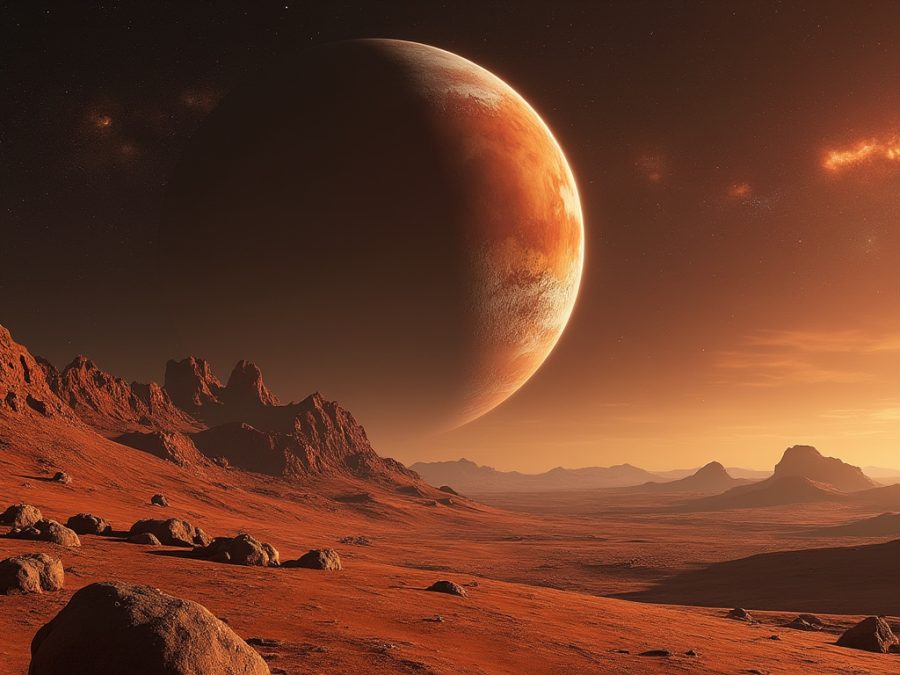
The concept of colonizing Mars has captured the imagination of humanity for decades, fueled by science fiction and the pioneering spirit of exploration. In recent years, this dream has moved from the realm of fantasy to a feasible, albeit distant, reality, thanks largely to advancements in space technology and the visionary efforts of figures like Elon Musk. But how realistic is the idea of establishing a human colony on Mars, and what steps are required to make it happen?
The Challenges of Mars Colonization
**1. ** Environmental Harshness:
- Atmosphere: Mars has a thin atmosphere, approximately 1% of Earth’s, composed mostly of carbon dioxide. This lack of atmosphere means there’s no protection against cosmic and solar radiation, and it does not support human life directly.
- Temperature: Average temperatures hover around -80°F (-62°C), with significant variation. The lack of magnetic field and thin atmosphere exacerbates temperature extremes.
- Gravity: Mars has about 38% of Earth’s gravity, which could have unknown long-term effects on human physiology, including muscle atrophy, bone density loss, and cardiovascular issues.
**2. ** Life Support Systems:
- Creating a sustainable environment where humans can live requires solving complex problems like water production (possibly through extracting water ice), oxygen generation, and food production in an alien environment.
**3. ** Radiation Protection:
- Without Earth’s magnetic field and thick atmosphere, Mars colonists would need significant shielding from radiation, which could involve underground habitats or specially designed habitats with radiation-resistant materials.
**4. ** Psychological Effects:
- The isolation, confined living spaces, and the psychological impact of being millions of miles from home pose unique mental health challenges.
**5. ** Economic Viability:
- The cost of Mars colonization is currently astronomical, with estimates suggesting billions of dollars per mission. Making the endeavor economically sustainable remains a significant hurdle.
The Role of Elon Musk and SpaceX
Elon Musk has positioned himself at the forefront of the Mars colonization effort through his company, SpaceX:
- Starship Development: SpaceX’s Starship, designed to be a fully reusable spacecraft, is central to Musk’s vision. It aims to drastically reduce the cost of space travel by reusing both the spacecraft and its rocket boosters.
- Timeline Projections: Musk has set ambitious timelines, suggesting uncrewed missions to Mars within a couple of years, followed by crewed missions if initial landings are successful. His long-term goal is to establish a self-sustaining city on Mars, potentially within the next few decades.
- Philosophical Motivation: Musk’s drive is not just technological but also philosophical, rooted in the idea that becoming a multi-planetary species is crucial for the long-term survival of humanity against existential risks like nuclear war or asteroid impacts.
Technological and Scientific Advances Needed
- In-Situ Resource Utilization (ISRU): Utilizing Martian resources like water ice for life support and fuel could make Mars colonization more feasible. This includes terraforming concepts, though current scientific consensus suggests this might be more science fiction than science fact at present.
- Robotics and Automation: Advanced robotics could precede human settlers, preparing habitats, extracting resources, and maintaining facilities, reducing the initial human burden.
- Medical Advancements: Addressing the health effects of low gravity and high radiation will require breakthroughs in medicine, possibly including genetic engineering or advanced pharmaceuticals to combat radiation damage.
- Sustainable Life Support: Closed-loop life support systems that recycle air, water, and waste will be essential, along with innovations in agriculture like hydroponics or aeroponics.
The When: A Speculative Timeline
- Short Term (2020s-2030s): Uncrewed robotic missions to test landing technologies, resource extraction, and habitat construction. Early human flights could be for short stays, similar to extended space station visits.
- Mid Term (2030s-2040s): If initial missions succeed, longer-duration stays might begin, focusing on establishing basic infrastructure. This could include more permanent habitats, possibly underground or in lava tubes for radiation protection.
- Long Term (2050s and Beyond): Aiming for a self-sustaining colony, with the necessary technology, governance structures, and perhaps terraforming efforts beginning or in advanced planning stages.
Conclusion
The colonization of Mars remains a monumental undertaking filled with scientific, ethical, and logistical challenges. While Elon Musk’s involvement through SpaceX has significantly advanced this vision, the journey from exploratory missions to a full-fledged colony will require not just technological innovation but also international cooperation, economic models that make sense for such an endeavor, and perhaps a reevaluation of our approach to space ethics. Whether humanity will set foot on Mars in the next few decades or if it will take longer, the journey towards making Earth’s neighbor habitable represents one of the greatest adventures in human history, blending the frontiers of technology, survival, and the human spirit of exploration.








